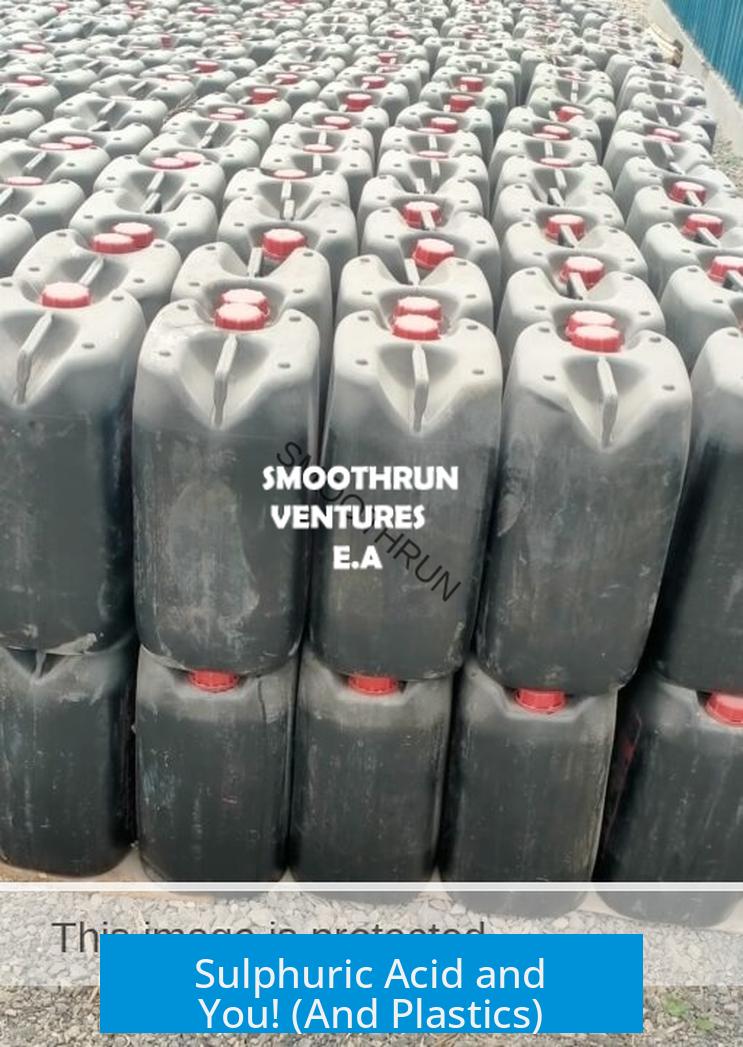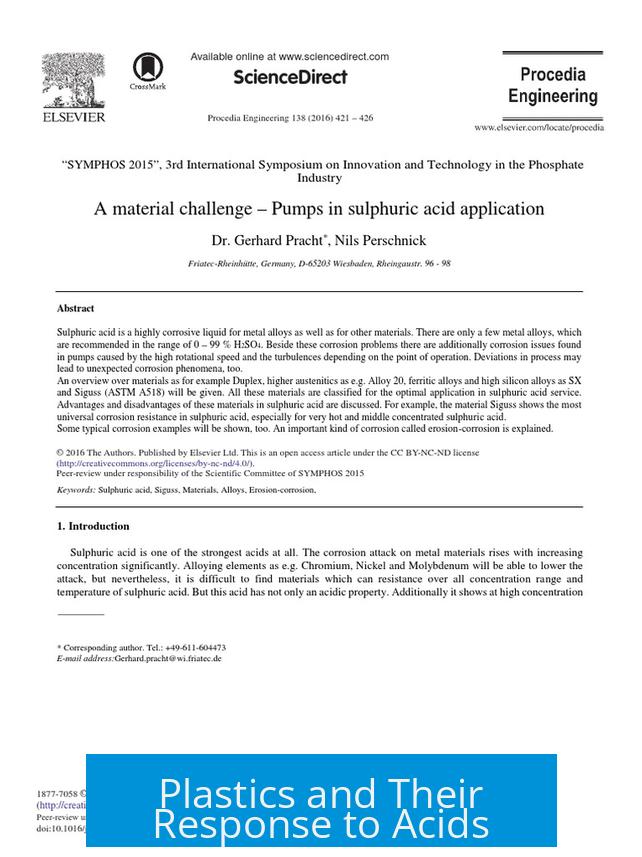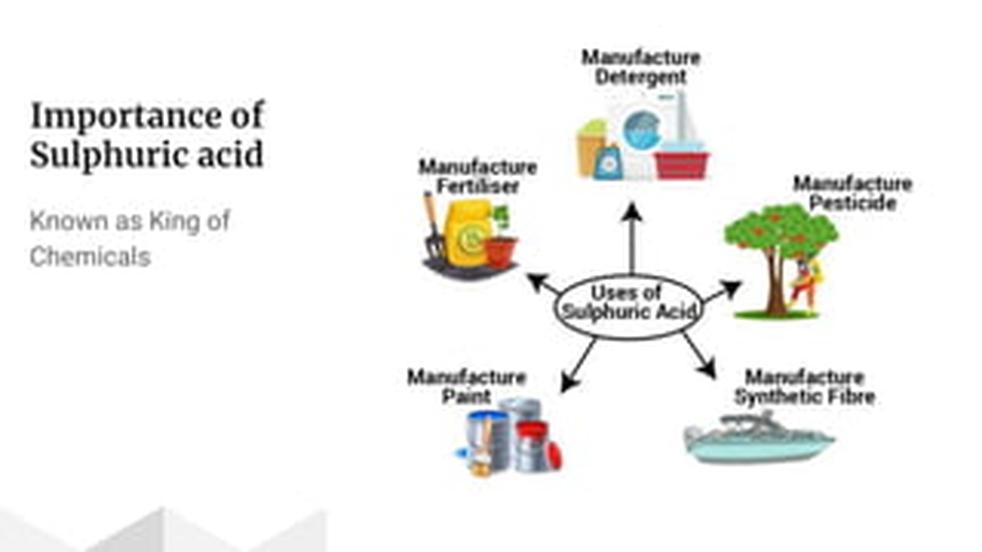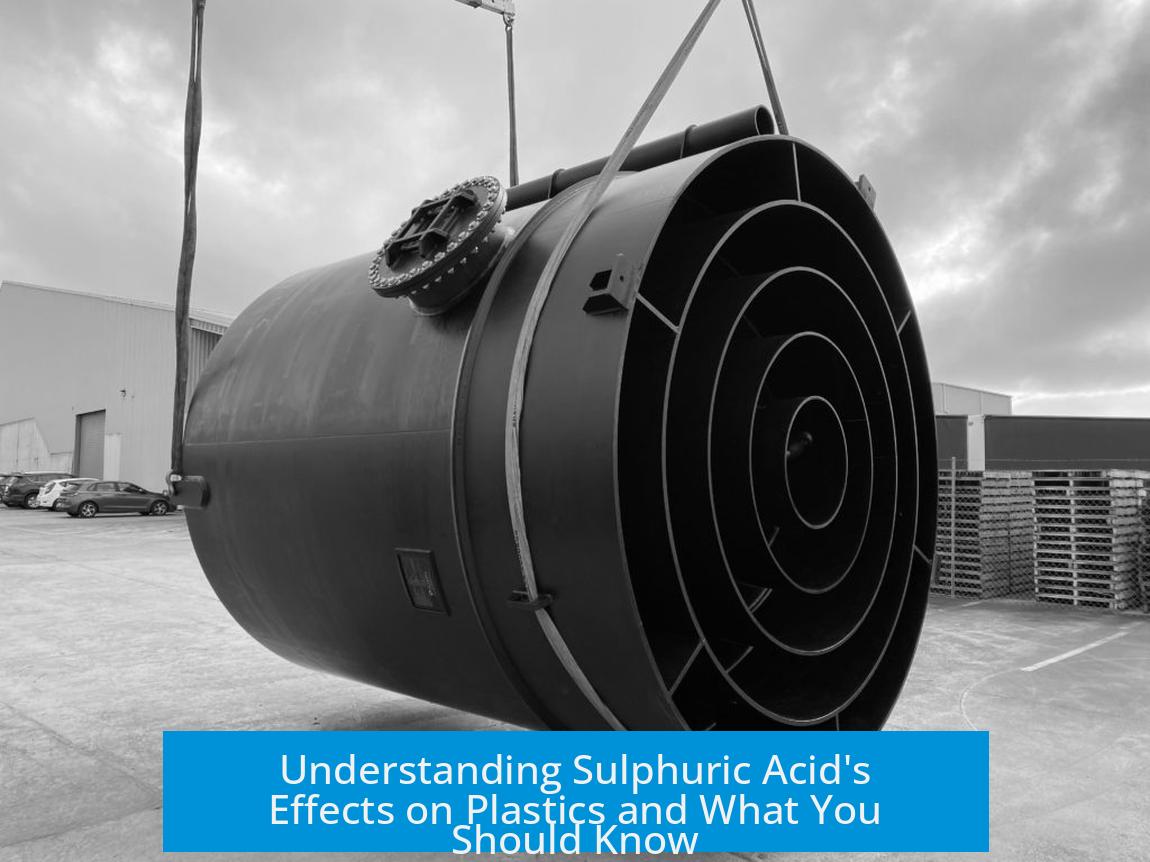Sulphuric Acid and You! (And Plastics)

Sulphuric acid’s interaction with plastics varies widely depending on the type of plastic and exposure conditions. Some plastics resist damage well, while others degrade when exposed. Time and acid concentration significantly influence the extent of damage.
Plastics and Their Response to Acids

Not all plastics react the same way to acids like sulphuric acid or sulfurous acid. Acids attack some plastics severely, leading to damage.
- Acid-Reactive Plastics: Polyamides (nylons), polyesters, acetals (e.g., Delrin), and cellulose derivatives contain functional groups vulnerable to acid attack. These plastics can flake, soften, or turn into a goo depending on exposure length and acid strength.
- Acid-Resistant Plastics: Polyolefins (such as polyethylene and polypropylene) resist acidic environments well. These are preferred for storing or handling acids.
Impact of Exposure Time and Acid Amount

Damage to plastics is not instantaneous.
- Short acid exposure usually does not cause immediate severe damage to plastics.
- The extent of degradation depends on the amount of acid and exposure duration.
- For example, spilling sulphuric acid briefly may not cause noticeable damage, but prolonged exposure can be harmful, especially to acid-reactive plastics.
Sulfurous Acid and Plastic Interaction

Sulfurous acid forms upon dissolving sulfur dioxide in water. It is a weak acid compared to sulphuric acid.
- This weak acidity limits its potential to dissolve or degrade plastics in short contact times.
- Claims that “all the plastic is melting” under weak acid exposure are inaccurate.
- Some plastic degradation might occur, especially with acid-reactive plastics, but actual melting is unlikely.
Specific Notes on Plastic Types

- Acetone vs Acid: Acetone is a stronger solvent for many plastics than acids and can cause rapid dissolution or deformation. Acid exposure is generally less aggressive than acetone for plastics like acrylic or polycarbonate.
- Acrylic Plastic: Without consistent data, it is unclear whether acids will “burn through” acrylic, but strong acids and prolonged contact could cause damage.
Summary of Key Points
- Acid sensitivity varies widely among plastic types; polyamides and acetals are vulnerable, while polyolefins resist acids.
- Exposure time and acid quantity influence damage extent; short exposure reduces risk.
- Sulfurous acid is weak and unlikely to cause significant plastic degradation quickly.
- Acetone is more aggressive than acids in degrading many plastics.
Sulphuric Acid and You! (And Plastics): What You Need to Know

Imagine standing in your workshop with a bottle of sulphuric acid and a pile of plastics next to you. What happens next? Will the acid turn everything into a gooey mess, or will some plastics remain unscathed? Sulphuric acid and you (and plastics)—it’s a curious relationship, and today you’ll get the lowdown on what to expect, how to handle it, and why some plastics are tougher than your Monday morning coffee.
Let’s dive straight in.
What Happens When Sulphuric Acid Meets Plastic?
Here’s the quick answer: Whether a plastic melts, degrades, or just shrugs off sulphuric acid depends heavily on the type of plastic and how long it’s exposed to the acid.
Not all plastics react the same way. Some plastics have acid-reactive groups in their structure. These polymers—like polyamides (hello, nylon!), polyesters, acetals (such as Delrin), and cellulose derivatives—don’t like acids one bit. Expose these bad boys to sulphuric acid, and they could flake away or dissolve into a gooey mess. Ouch!
On the flip side, there are acid-resistant plastics. Ever heard of polyolefins? These tough cookies are often the safest bet when dealing with acids, including sulphuric acid. They barely blink, barely change. They’re like the bouncers at the acid club keeping the trouble out.
Time and Quantity: The Unsung Heroes of Acid Damage
What if you spill a bit of sulphuric acid on a plastic surface? Will it immediately dissolve? Nope. Think of it like that spilled latte—it doesn’t immediately ruin your day as long as you clean it fast. Exposure time and amount matter just as much, if not more, than the acid itself.
A little sulphuric acid for a second or two won’t drill a hole “all the way to China.” But leave a plastic soaking for hours or days, and you might witness some serious degradation. So, handling time matters. Remember that if you want your plastic containers to last.
What About Sulfurous Acid? Is It the Same?
Let’s clarify something: when sulphuric acid gets diluted, it might form sulfurous acid, which is much weaker. This weaker cousin won’t dissolve plastics rapidly—usually not in the short term anyway. So don’t panic if you’re dealing with some diluted acid. But don’t get cocky. Even weak acids can cause damage over time.
Will Sulphuric Acid Melt Plastic?
Ladies and gentlemen, no, sulphuric acid generally doesn’t make plastic melt. But degrading? That’s a very different story. Some plastics exposed to the acid might start breaking down chemically—losing strength, becoming brittle, or turning into something unpleasantly gooey.
Think of it as a slow roast rather than a fast flame. The acid isn’t a plastic incinerator but a chemical saboteur lurking in the shadows.
Acetone vs Sulphuric Acid—a Quick Comparison
If you think acid can dissolve any plastic, think again. Acetone is the chemical that deserves the “plastic invader” trophy here. It can dissolve many plastics rapidly. Sulphuric acid? Not as explosive in this regard, especially for acid-resistant types. So, acetone and sulphuric acid aren’t exactly interchangeable in their effects.
That means if you want to clean or modify plastics, know your solvent before you pour. Pro tip: test a small area first, unless you want science experiments on your hands.
What About Acrylic Plastic and Sulphuric Acid?
Burn through acrylic plastic with sulphuric acid? The data doesn’t give a simple yes or no. But considering acrylic’s chemical structure, it resists many acids to a point but can suffer with prolonged exposure or stronger formulations. No immediate melting, but gradual deterioration could happen—especially if acid pools and bakes under heat.
Practical Tips to Safeguard Plastics Around Sulphuric Acid
- Choose wisely: Use polyolefins when you must contain or be around sulphuric acid. They’re trucks in a world of sedans.
- Limit exposure time: Don’t let acid lounge on a plastic surface longer than necessary.
- Test first: Run small spot checks with your plastic piece before full exposure.
- Wear safety gear: This isn’t just about protecting plastic. You, too, need protection—acid is nasty business.
- Storage matters: Use acid-resistant containers specifically made for corrosive substances.
Why Should You Care?
Knowing how sulphuric acid interacts with plastics can save you money and headaches. Imagine storing acid in nylon containers—sounds unsafe, right? Or building machinery where acid drips onto polyester parts. Problems, guaranteed.
Getting this chemical match right improves durability and safety. It keeps you, your workspace, and your plastics all happy.
Wrapping Up
So, your relationship with sulphuric acid and plastics should be one of respect and caution. Some plastics will stand firm; others will crumble or turn into slime under acid’s tricky touch. You don’t want to gamble with your materials or safety.
Next time you see sulphuric acid, remember: not all plastics are created equal. Use the right plastic, mind the exposure time, and keep your acid-handling game sharp.
Got some tricks to protect your plastics or funny stories about acid mishaps? Share below! After all, learning how to dance safely with sulphuric acid can be your new superpower.
Which plastics resist sulphuric acid best?
Polyolefins are reliable against sulphuric acid. They often hold up well without damage.
Does sulphuric acid instantly destroy all plastics?
No, damage depends on exposure time and the amount of acid. Small spills take longer to cause harm.
Can sulphuric acid cause plastic to melt?
It doesn’t melt plastic outright. Some plastics may degrade, but melting is unlikely.
How do acid-reactive plastics respond to sulphuric acid?
Plastics like nylon and polyesters can flake or turn gooey. Their acid-sensitive groups break down under contact.
Will sulfurous acid dissolve plastics quickly?
Sulfurous acid is weak and rarely dissolves plastics fast. Its limited strength usually prevents rapid damage.





Leave a Comment